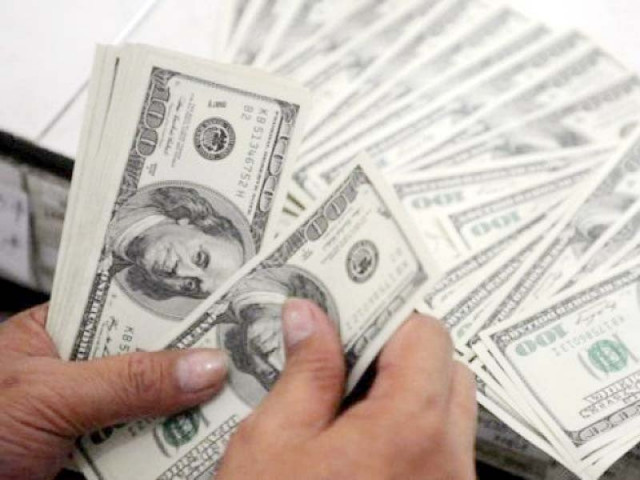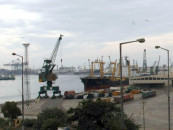Dollar supply improved 16% in Mar
It signals rupee may appreciate against greenback in near future

Latest financial numbers indicate the supply of US dollar has improved 16% in Pakistan’s economy, signalling the rupee will appreciate against the greenback in the near future.
According to a report of the Optimus Capital Management (OCM), Pakistan’s net foreign exchange derivatives position improved by around 16%, or $900 million, to negative $4.8 billion in March 2023 compared to negative $5.7 billion in February 2023.
This means central bank borrowing from domestic commercial banks fell to $4.8 billion in March compared to $5.7 billion in February as it retired some of the debt, a financial expert elaborated.
The net foreign exchange derivatives are calculated by subtracting the foreign exchange reserves held by commercial banks from the reserves of the State Bank of Pakistan (SBP), as the central bank borrows the reserves of commercial banks (swapping dollar against rupee), it has been learnt.
The increase in US dollar supply has only theoretically improved the outlook for the rupee-dollar exchange rate.
The domestic currency continued to appreciate for the third consecutive working day on Friday as it inched up 0.08%, or Rs0.23, to Rs283.59 against the US dollar in inter-bank market.
The currency has continued to stabilise around current levels for the past one month.
OCM stated, “US dollar supply in the inter-bank market has considerably improved as manifested in the rising rupee-dollar forward premiums (rate) and declining SBP’s net short position.”
Talking to The Express Tribune, Ismail Iqbal Securities Head of Research Fahad Rauf said the increased supply of US dollar in the inter-bank market encouraged the central bank to purchase the surplus greenback and partially repay the debt to commercial banks last month.
He recalled that Pakistan’s current account turned a surplus at $654 million after a gap of 28 months in March 2023.
Rauf noted that SBP’s reserves had improved to $4.46 billion compared to less than $3 billion a couple of months ago. The improvement came partially through the $2 billion refinancing provided by China.
Despite the improvement, Rauf added, the central bank’s reserves remained critically low at $4.46 billion, providing just one month of import cover. “SBP’s reserves should provide at least three months of import cover at $15 billion.”
Furthermore, the turnaround in the current account balance was not a development that could be celebrated as it was an outcome of controlled imports. The government has virtually suspended imports, which resulted in complete or partial closure of factories and left millions of people jobless.
Imports reduced to less than $3 billion in April compared to an all-time high of around $8 billion hit earlier. The government has controlled imports due to the low foreign exchange reserves and to mitigate the risk of default.
The research head was of the view that the critically low foreign exchange reserves would not allow improvement in the rupee-dollar exchange rate in the near future.
However, the exchange rate would improve once the government attracts $8-10 billion in foreign investment or friendly countries provide new bailout packages.
He said the government was making efforts to convince the International Monetary Fund (IMF) to revive its $7 billion loan programme.
However, the fund has continued to put new conditions. In its latest condition, the lending institution has asked the government to further hike its key policy rate and impose new taxes in the next fiscal year budget.
Other global financial institutions and friendly countries have pledged around $9 billion in flood relief in January 2023. They are, however, waiting for the IMF’s nod for the revival of its loan programme to fulfil their financial commitments.
Meanwhile, Finance Minister Ishaq Dar has approached the United States for the second time in the past two months for the revival of IMF loan programme.
The IMF, however, said Pakistan needed to take financial commitment from friendly countries that they would lend $6-7 billion by the end of June 2023.
Earlier, Saudi Arabia and the UAE indicated fresh commitments of $2 billion and $1 billion respectively to the IMF.
Published in The Express Tribune, May 6th, 2023.
Like Business on Facebook, follow @TribuneBiz on Twitter to stay informed and join in the conversation.


















COMMENTS
Comments are moderated and generally will be posted if they are on-topic and not abusive.
For more information, please see our Comments FAQ